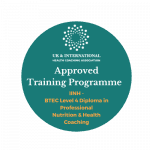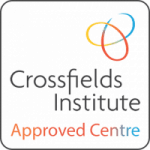If you’re seeking natural, clean, safe or just generally better-for-you personal care, this is the post to help get you started. Whether you’re just looking for some information on how to make better choices or perhaps you want to revamp your makeup and skincare altogether, this post aims to provide you with some non-toxic skincare basics for the beginner in mind.
Non-toxic skincare basics: Skin Appreciation
Let’s appreciate your skin for a moment. As the largest organ in your body, this one is pretty unique. The skin has three layers:
- The epidermis which is the outermost layer of skin
- The dermis which contains tough connective tissue, hair follicles, and sweat glands.
- The hypodermis or deeper subcutaneous tissue which is made of fat and connective tissue.
All in all your skin is a protective barrier from outside factors like bacteria, water and chemical particles, and makes the inside of our bodies waterproof. If this barrier is compromised it may become prone to infection and/or inflammation. This is the challenge for skincare and cosmetic companies; creating products where the beneficial chemicals can pass without compromising the barrier.
A note on skincare routine
Not all skincare products are created equal. Note also that with the ingredient list, not every item needs to be absorbed. But in the case of any effect on ageing, pigmentation or skin texture, it will have to penetrate your skin. When it comes to penetration, there are several different methods that allow a product to work its way through all the layers of the skin. This can range from chemical enhancers to more natural things like peptides and skincare treatments like injections, micro-needling, microdermabrasion, and chemical peeling.
As a starting point, good skincare is about results and not just the label and product. So before even beginning it’s important to decide what outcome you’re looking for with a skincare routine and what you want the products to do.
Non-Toxic Skin Care Basics: We can’t rely on labels
There are things that are synthetic that can still be safe and vice versa, there are things that are natural that can be harmful. It’s important that as we’re looking at personal care products, we don’t get caught out by words like ‘non-toxic’, ‘clean’, ‘gentle’, ‘natural’ and ‘safe’ which are all marketing terms when it comes to skincare.
There is no standard or legal definition for what makes a product “natural” and many “natural” ingredients are capable of causing skin allergy and irritation. Same goes for other terms like ‘clean’ but it is largely taken to mean products which are natural or organic and products lacking synthetic preservatives such as parabens.
Damage from both sides
In many ways, the beauty industry relies on the fact that many of us don’t recognise or understand what the long list of chemical names on the back of our skincare products are or what they do. But clean beauty brands tend to use the same vague terms and language to describe their ethos which in turn brings forward even more confusion. For example, many clean beauty brands claim to be “chemical-free” and of course, chemicals imply something potentially dangerous. In the case of ‘clean’ products, the implication is that any ingredients they don’t use are then dirty.
Where do you draw the line on who is right and who is wrong? And not only that, what does ‘clean’, ‘natural’, ‘sustainable’ really mean? Because in truth, we can draw different conclusions and without a proper definition, this is all subjective. I think it’s important to acknowledge both sides when having this conversation.
How do I know it’s safe?
When it comes to skincare, the basic question is is it safe? As a start, it’s important to note that not every country is the same. Cosmetics and personal care products are regulated by the EU Cosmetics Regulation 2009 and luckily the EU has one of the strictest regulations in the world. Other countries, like the US for example, are different.
As a whole, it makes perfect sense to choose brands that are ethical brands that use high-performance formulations and have strict rules when it comes to sustainability, ingredient sourcing and manufacturing processes. There are websites available online that only stock such products. For example, a quick search brought up some excellent sites like the little green shop and reuzi.
Whatever you’re looking for – better, greener, sustainable, non-toxic – in your personal care products, there are a few resources to leverage:
- Products that have a certification for the ingredients they use. Some recognised stamps to look out for include EWG verified, NSF/ANSI 305, Vegan.
- The Environment Working Group (EWG): This is an amazing resource where you can look up products you’re using and see how they rank when it comes to the safety of ingredients. They provide a scale from A-F for products in terms of safety.
- PubChem: This is a comprehensive database run by the same body as PubMed, this platform provides information where you can analyse and read about toxicity and safety of individual chemicals. Usually, if you can’t find information on EWG, this would be a good next port of call.
There is no blanket advice we can position here other than do your best. Many local brands are very easy to communicate with so don’t be afraid to email them and open a line of communication. If you know nothing else, just consider the number of products you use on your skin and/or the number of ingredients in each. Finally, don’t forget you can also filter products by other preferences like vegan, zero waste and plastic-free!
The Basic Routine
Let’s caveat this part by saying we’re no beauty experts. We’re simply providing you with some minimal steps that can make up the full or foundation of your skincare routine. Remember that we expose our bodies and our skin to so many products every day (beauty to cosmetic to cleaning etc) that taking everything else in this blog aside, taking stock and reducing the total amount of products where possible is a great first step. This might include:
- Makeup free days to let the skin breathe
- 2 in 1 / multi-use products
- Reducing overall the total amount of AND/OR choosing brands with fewer ingredients when it comes to any of your makeup/skincare/cleaning products
With skincare, the basic three steps include – wash, tone and moisturise.
With washing, you’re removing the dirt and grime you accumulate during the day. This ‘dirt’ is everything from makeup, to being exposed to pollution in the air to just dirt from touching your face etc. Generally speaking, if you do this once per day choose the evening. You can use a foaming cleanser, an oil cleanser etc. With anyone who has a skin condition of some sort, one tip is to avoid using hot water when you wash your face and switch to warm instead as it can aggravate skin. This applies to hair too; hot water can make hair more dry. If you’re feeling brave, you can even look to leverage cold showers for an immune-boosting bonus!
Toning: This looks different for different people. A good toner should balance the pH on your skin, seal your pores, hydrate your skin and prep it for the next step. Depending on your skin type, age (teen versus menopausal female for example) and skincare focus, your toner requirements will be different.
Moisturising: Again skin type matters here but the basic function is to prevent skin drying out alongside other functions the product is designed to support with.
Is there Gluten in your Personal Skin Care products and does it matter?
It might surprise you to learn this but topical gluten doesn’t work the same way as eating gluten in food. In fact, gluten is a molecule too large to penetrate the deeper layers of the skin (source). Great news! There is a but though – certain treatments like steam, dermabrasion, electric current or light treatment, or even some oils may allow the ingredient to enter via hair follicles.
The other big but – specifically if you’re allergic/celiac – is that you may potentially consume the topical ingredient if the product is applied to your mouth, hands (which often touch your mouth) and/or spray. Here are some basic tips when it comes to ingredients:
- Read the ingredients listed on cosmetics looking for the words “wheat,” “barley,” “malt,” “rye,” “oat,” “triticum vulgare,” “hordeum vulgare,” “secale cereale,” and “avena sativa.”
- Look for off-packaging ingredient lists when the product packaging is too small to include this information on the label. This may be in the form of tear sheets located next to the product display case.
- Contact cosmetic companies when ordering products by mail order and ask whether their products contain any derivatives of wheat, barley, rye, or oats.
- Use cosmetics labelled gluten-free. An increasing number of manufacturers are labelling their products.
(source)
Non-Toxic Skincare Basics: From the inside out
Clean beauty is a way of life so it makes sense that wellness and clean beauty go hand in hand. Of course, our diet and lifestyle can have an impact. These three groups can show up very quickly on the skin.
- Dairy
- Sugar
- Oxidised oils: i.e. certain vegetable oils and fried food.
- Stress
If you need support, why not contact our clinic.
What can you do to benefit:
- Probiotic-rich foods or supplement to support your gut
- Hydration
- Colourful vegetables, fruits, omega 3 fats, seafood. In essence, we need a balance of everything both essential and nonessential essential. But specific nutrients (found in the aforementioned foods) for skincare include vitamin C, D, E, B12, B6, A, collagen, and zinc.
- Sleep
- Sunlight to help your body process and synthesise vitamin D.
Which product do I change first?
Having read the above, you might wish to make some changes to your beauty and skincare routine. So where do you start?
- Research your current products on EWG and group them based on the rankings you find.
- Finish what you have first! The risk here is that you will take all your current products and just throw them out to start anew. But this doesn’t feed into sustainability, instead just adding to waste. Use up what you have first.
- While it might make sense to change the products that cover the most surface area first and this is a good start. But also consider that we have a much higher absorption rate from inhalation than topical application. Therefore, sprays, mists, lipstick/gloss and also things you put on your hands (touch your face/lips etc).
We hope you’ve found this article interesting and beneficial for your own routine and deciding on non-toxic skincare basics!












